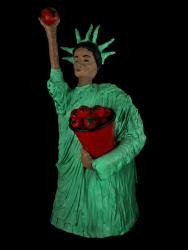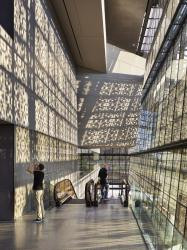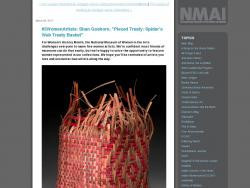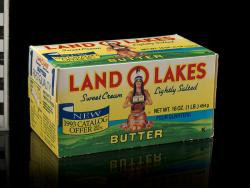Philippa Rappoport
I work in education and engagement, teacher professional development, and outreach at the Smithsonian Office of Educational Technology (OET), and have a particular interest in developing and producing trainings, programs, teaching techniques, and platforms that foster deep learning and contribute knowledge to improve practices in museum and preK-16 education and engagement. At OET over the last decade+, I created digital assets for schools, families, and new immigrant English Language learners to complement teacher professional development and pan-Smithsonian programming, including Learning Lab teaching collections, YouTube videos with tradition bearers, a handmade family stories book-making website, and online heritage tours.
Philippa Rappoport's collections
From One Artist to Another: "Rudolfo Anaya" by Gaspar Enríquez
 Philippa Rappoport
Philippa Rappoport
Crucial Conversations in American History: "Many Voices, One Nation" and "Becoming US"
 Philippa Rappoport
Philippa Rappoport
Cuban Balseros: Using Art and Artifact to Explore an American Immigration Story
 Philippa Rappoport
Philippa Rappoport
Teaching with the Smithsonian Learning Lab: A Workshop for George Washington University Faculty and Graduate Students
 Philippa Rappoport
Philippa Rappoport
Digital Museum Resources for the High School Ethnic Studies Classroom (Irving Arts Center )
 Philippa Rappoport
Philippa Rappoport
Down These Mean Streets: Community and Place in Urban Photography
 Philippa Rappoport
Philippa Rappoport
Zozobra in Santa Fe: A Contemporary Reckoning of a Local Tradition
 Philippa Rappoport
Philippa Rappoport
Learning Lab Teaching Collection for Frost Art Museum Workshop using Luis Cruz Azaceta's "Shifting States: Iraq"
 Philippa Rappoport
Philippa Rappoport
Learning Lab Training Collection on the Theme "The Search for an American Identity"
 Philippa Rappoport
Philippa Rappoport
Addressing 21st-Century Challenges: The National Museum of American History and the Center for Folklife and Cultural Heritage
 Philippa Rappoport
Philippa Rappoport
Irish Music
 Philippa Rappoport
Philippa Rappoport
"We the People": Flash Card Activity and Template
 Philippa Rappoport
Philippa Rappoport







